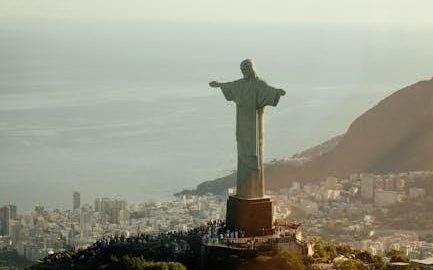The God of Fury PDF is an intriguing literary work that delves into themes of power, vengeance, and divine retribution․ Its narrative explores complex moral dilemmas, captivating readers with its intense storytelling and vivid characterizations․ While specific details about the book’s author and publication remain unclear, its exploration of human nature and conflict makes it a compelling read for fans of dramatic and thought-provoking fiction․
1․1 Background Information
The God of Fury PDF emerges as a compelling narrative that explores themes of divine retribution, power, and moral complexity․ While specific details about its origins remain unclear, the book appears to draw inspiration from mythological and philosophical concepts, blending them with contemporary storytelling techniques․ Its title suggests a focus on conflict, vengeance, and the consequences of unchecked fury, which are timeless themes in literature․ The PDF format allows for widespread accessibility, making it a modern medium for sharing this epic tale․ Readers can expect a story that delves into the human condition, examining how individuals and societies grapple with anger, justice, and redemption․ The narrative’s structure and pacing are designed to maintain engagement, balancing action with introspective moments․
1․2 Overview of the Book
God of Fury PDF is a captivating tale that delves into themes of vengeance, divine retribution, and the complexities of human conflict․ The story centers around a protagonist driven by fury, exploring their journey through trials of power, morality, and redemption․ With a mix of action-packed sequences and introspective moments, the book examines the consequences of unchecked anger and the search for justice․ The narrative is structured to maintain reader engagement, balancing emotional depth with fast-paced plot development․ While the PDF format ensures accessibility, the content itself is rich in character development and moral dilemmas, making it a compelling read for fans of dramatic and thought-provoking fiction․
1․3 Author’s Intent and Purpose
The author of God of Fury PDF crafts a narrative that probes the depths of human nature, particularly the themes of vengeance, divine retribution, and the blurred lines between justice and fury․ The writer’s intent seems to be to provoke reflection on the consequences of unchecked anger and the moral ambiguities surrounding conflict․ By weaving a tale of intense emotional and physical battles, the author aims to explore how fury can both destroy and redeem․ The purpose of the book appears to lie in its ability to challenge readers to consider the ethical implications of their actions and the cyclical nature of revenge․ Through this, the author seeks to leave a lasting impact on the reader’s understanding of justice and humanity․
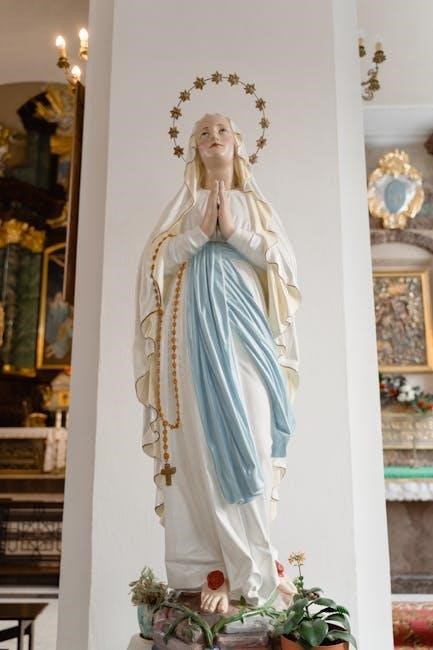
Plot Summary of “God of Fury PDF”
God of Fury PDF recounts a tale of intense conflict, where vengeance and divine retribution collide, unraveling a story of power, betrayal, and the pursuit of justice․
2․1 Main Plot Points
The God of Fury PDF unfolds with a protagonist grappling with a divine curse, igniting a quest for vengeance and redemption․ The narrative begins with a tragic event that awakens latent powers, setting the stage for a relentless struggle against fate․ Central to the story is the protagonist’s battle with a powerful antagonist, whose origins are steeped in mystery and divine wrath․ Key plot twists include betrayals, revelations of ancient prophecies, and a climactic showdown that reshapes the world․ Themes of justice, sacrifice, and the cost of power are interwoven, creating a gripping tale that explores the boundaries between humanity and divinity․ The story’s pacing intensifies as the protagonist confronts their destiny, leading to a resolution that balances revenge with mercy, leaving a lasting impact on readers․
2․2 Key Conflicts and Resolutions
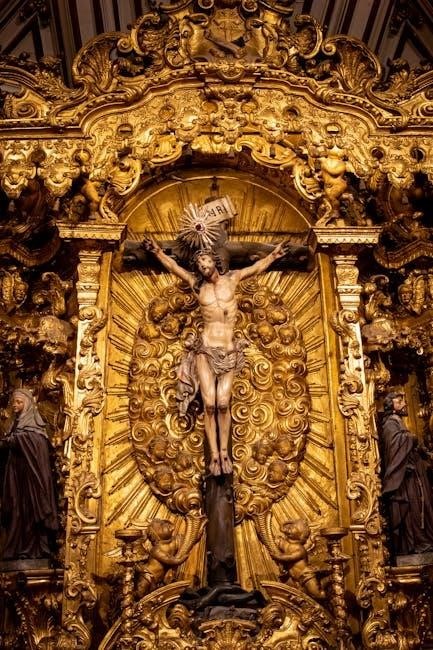
The God of Fury PDF centers on a protagonist torn between divine wrath and personal vengeance, creating a central conflict of moral and existential proportions․ The protagonist’s quest for revenge against a powerful antagonist drives the narrative, with internal struggles of guilt and righteousness intensifying the tension․ A pivotal resolution arises when the protagonist uncovers the antagonist’s vulnerability, tied to an ancient curse․ This discovery leads to a climactic confrontation, blending themes of justice and mercy․ The protagonist’s ultimate choice to spare their enemy, despite the personal cost, marks a turning point, highlighting the triumph of compassion over fury․ This resolution underscores the book’s exploration of redemption and the cyclical nature of vengeance, leaving readers contemplating the true meaning of divine justice and human forgiveness․
2․3 Character Development Throughout the Story
The protagonist of God of Fury PDF undergoes significant transformation, evolving from a figure consumed by anger and vengeance to one grappling with the moral ambiguities of their actions․ Initially driven by a singular focus on retribution, the character’s interactions with others reveal deeper layers of vulnerability and introspection․ Supporting characters, such as a wise mentor and a conflicted ally, challenge the protagonist’s perspective, fostering growth and self-awareness; The antagonist, equally complex, is portrayed as both a formidable force of destruction and a being with a tragic backstory, adding depth to the narrative․ Through these dynamics, the story skillfully explores themes of redemption, forgiveness, and the duality of human nature, enriching the reader’s understanding of the characters’ motivations and journeys․

Main Characters in “God of Fury PDF”
The God of Fury PDF revolves around a cast of dynamic characters, including a powerful protagonist driven by vengeance and a formidable antagonist embodying divine wrath․ Supporting characters add depth to the narrative, exploring themes of morality and redemption through their interactions and conflicts․ Each character’s role is pivotal in unfolding the story’s complex dynamics and emotional struggles, creating a rich tapestry of personalities that captivate readers․
3․1 Protagonist Analysis
The protagonist of God of Fury PDF is a complex and deeply conflicted character, driven by a mix of vengeance and a desire for justice․ Their journey is marked by intense emotional struggles, as they grapple with the consequences of their actions․ The protagonist’s motivations are rooted in a traumatic past, which shapes their worldview and decisions throughout the story․ Through their arc, the narrative explores themes of morality, redemption, and the blurred lines between right and wrong․ The character’s development is both compelling and tragic, making them a central focus of the book’s emotional depth and philosophical inquiry․ Their role in the story underscores the human condition’s fragility and resilience․
3․2 Antagonist Analysis
The antagonist in God of Fury PDF is a formidable figure, embodying both power and ruthlessness․ Their actions are driven by a twisted sense of purpose, often justified as divine or necessary․ This character’s presence shapes the protagonist’s journey, creating a tense dynamic that fuels the story’s conflict․ The antagonist’s motivations are multifaceted, blending personal vendettas with larger ambitions, making them a compelling and complex adversary․ Their role in the narrative not only escalates the stakes but also challenges the protagonist’s moral framework․ Through their interactions, the antagonist reveals the darker aspects of the world, adding depth to the story’s exploration of vengeance and justice․ Their legacy lingers, influencing the plot’s outcome and the protagonist’s ultimate path․
3․3 Supporting Characters and Their Roles
The supporting characters in God of Fury PDF play pivotal roles in shaping the narrative and aiding the protagonist’s journey․ Each character brings unique perspectives and skills, enriching the story’s depth․ Some serve as moral guides, offering wisdom and challenging the protagonist’s decisions, while others provide logistical support, enabling key actions․ These characters often face their own struggles, adding layers to the plot․ Their interactions reveal the broader societal dynamics and cultural influences of the world․ While not always in the spotlight, their contributions are essential to the story’s progression and the protagonist’s ultimate resolution․ Their presence underscores the importance of alliances and trust in overcoming adversity․
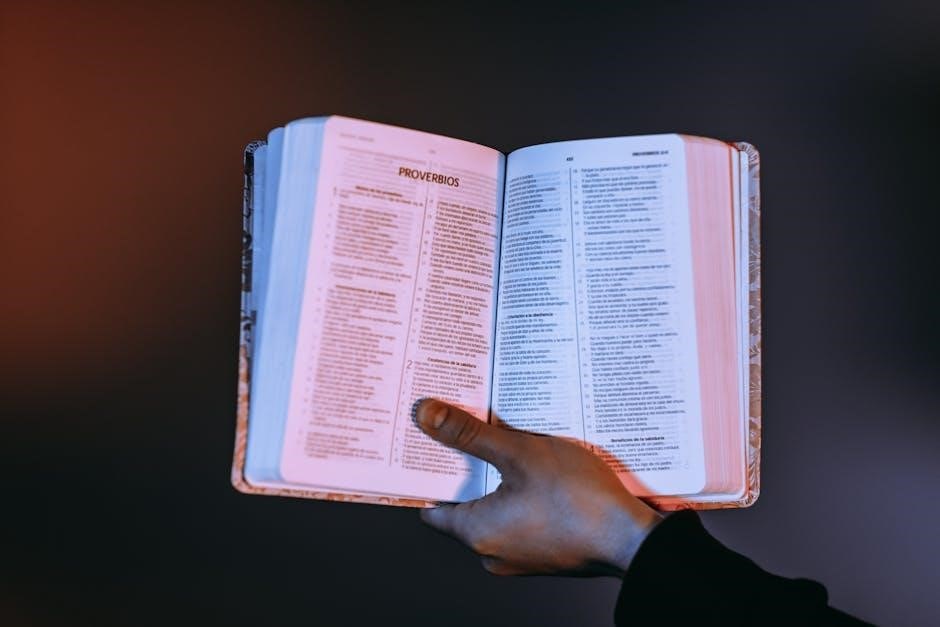
Themes and Motifs in “God of Fury PDF”
The book explores themes of power dynamics, vengeance, and divine justice, intertwined with motifs of betrayal, redemption, and the struggle between good and evil, revealing human nature’s complexity․
4․1 Central Themes Explored
The God of Fury PDF delves into profound themes, primarily focusing on the nature of power and its corrupting influence․ It examines how authority, when wielded without restraint, can lead to devastation and chaos․ Another central theme is vengeance, portrayed as a double-edged sword that drives characters to both seek justice and perpetuate cycles of violence․ The exploration of divine justice versus human morality adds depth, questioning whether retribution should be left to higher powers or handled by mortal hands․ These themes, intertwined with elements of betrayal and sacrifice, create a narrative that challenges readers to reflect on ethical dilemmas and the consequences of unchecked ambition․
4․2 Recurring Motifs and Their Significance
In the God of Fury PDF, recurring motifs such as fire and storms symbolize divine wrath and purification․ These elements underscore the idea of retribution and transformation, highlighting the consequences of unchecked power․ Another motif is the duality of light and darkness, representing the struggle between good and evil․ This contrast emphasizes the moral ambiguity of characters and their choices․ Additionally, the recurring imagery of broken structures and shattered oaths signifies betrayal and the collapse of trust․ These motifs collectively create a layered narrative, reinforcing the book’s central themes of vengeance, justice, and the fragility of human morality in the face of divine fury․
4․3 Symbolism Used in the Narrative
The God of Fury PDF employs rich symbolism to deepen its narrative․ Imagery of burning cities and shattered temples represents divine wrath and the destruction of corrupt systems․ The recurring symbol of a fractured sword signifies broken oaths and lost honor, while rivers of fire metaphorically cleanse the land of sin․ These symbols are woven into the story to illustrate themes of justice, redemption, and the consequences of unchecked fury․ The use of such imagery creates a vivid, immersive experience, allowing readers to connect with the story’s moral and emotional core on a profound level․

Writing Style and Structure
The God of Fury PDF features a dynamic narrative voice, blending poetic prose with intense dialogue․ Its structure is tightly paced, maintaining suspense and emotional engagement throughout the story․
5․1 Narrative Voice and Perspective
The God of Fury PDF employs a compelling narrative voice that shifts between omniscient and intimate perspectives, immersing readers in the protagonist’s emotional turmoil․ The use of vivid imagery and direct dialogue enhances the storytelling, creating a dynamic interplay between description and action․ The narrative’s tone oscillates seamlessly from introspective to explosive, reflecting the protagonist’s internal struggles and external conflicts․ This dual perspective not only deepens character development but also heightens the tension, making the story engaging and emotionally resonant․ The author’s choice of narrative voice effectively balances action and reflection, drawing readers into a world of fury, redemption, and transformation․
5․2 Use of Language and Tone
The God of Fury PDF showcases a rich, evocative language that propels the narrative forward, blending vivid descriptions with sharp, impactful dialogue․ The tone shifts seamlessly from somber and reflective to explosive and intense, mirroring the protagonist’s emotional journey․ The author’s use of metaphors and similes adds depth, while the direct, unflinching prose heightens the story’s urgency․ The language is both poetic and visceral, creating a sense of immersion that draws readers into the world of fury and redemption․ This dynamic interplay of tone and style ensures the narrative remains engaging and emotionally resonant, leaving a lasting impression on the reader․
5․3 Structure and Pacing of the PDF
The God of Fury PDF is structured to maximize tension and emotional impact, with a narrative that flows seamlessly between intense action and reflective pauses․ The pacing is expertly managed, ensuring a balance between fast-paced, thrilling sequences and slower, introspective moments that allow for character depth․ The PDF’s organization into clear chapters or sections helps maintain reader engagement, while the use of strategic pauses and climactic reveals keeps the story dynamic․ This structure enhances the overall experience, making the narrative both gripping and thought-provoking․ The author’s ability to sustain momentum while exploring complex themes underscores the PDF’s compelling readability․

Cultural and Historical Context
God of Fury PDF draws from rich mythological and historical narratives, weaving tales of divine wrath and human conflict․ The text reflects themes of vengeance and redemption, resonating with cultural motifs of justice and morality․ Its historical backdrop, though not explicitly detailed, suggests a timeless exploration of human nature and societal norms․ The PDF’s cultural depth enhances its universal appeal, offering readers a lens to understand complex emotions and societal dynamics through a historical prism․
6․1 Historical Setting of the Story
The God of Fury PDF is set against a backdrop of ancient conflicts and divine intervention, drawing inspiration from mythological tales of vengeance and retribution․ While the exact historical period is not explicitly detailed, the narrative suggests a time of great turmoil and societal upheaval, where divine forces play a pivotal role in shaping human destiny․ The story’s setting is rich with cultural and historical allusions, creating a vivid tapestry that immerses readers in a world of epic struggles and moral dilemmas․ The interplay between historical events and mythological elements adds depth to the narrative, making it a compelling exploration of human nature and divine influence․
6․2 Cultural Influences on the Narrative
The God of Fury PDF reflects a blend of cultural influences, drawing from mythological and religious themes that explore divine anger and human resilience․ The narrative incorporates elements from various traditions, suggesting a universal fascination with the duality of vengeance and redemption․ Cultural motifs such as divine retribution, communal guilt, and the struggle for justice are woven into the story, creating a rich tapestry of moral and ethical dilemmas․ These influences not only shape the characters’ actions but also the overarching themes, making the narrative a compelling exploration of human culture and its relationship with the divine․ The interplay of these cultural elements adds depth and complexity to the story․
6․3 Relevance of the PDF in Modern Context
The God of Fury PDF remains relevant in contemporary discussions due to its exploration of universal themes such as power, vengeance, and redemption․ In a modern context, the narrative resonates with issues like social justice, personal vendettas, and the ethical complexities of retribution․ The PDF’s focus on human emotions and moral dilemmas aligns with current societal debates, offering readers a lens to reflect on justice, forgiveness, and the consequences of unchecked anger․ Its timeless themes ensure that the story continues to inspire thought and conversation, making it a valuable resource for understanding human nature and conflict in both historical and modern settings․

Reception and Reviews
God of Fury PDF has garnered critical acclaim for its captivating narrative and emotional depth․ Readers praise its thought-provoking themes, while critics highlight its unique storytelling and character development․
7․1 Critical Reception of the Book
Critics have praised God of Fury PDF for its bold storytelling and exploration of complex themes․ Reviewers highlight the book’s ability to weave intense emotional narratives with morally ambiguous characters․ Many applaud its unique approach to genre conventions, blending elements of drama and suspense seamlessly․ The prose is described as evocative, with vivid descriptions that immerse readers in the story’s world․ While some critics note pacing inconsistencies, the overall consensus is positive, with many hailing it as a standout in its category․ The book’s thought-provoking themes and memorable characters have left a lasting impression on readers and critics alike, solidifying its place as a compelling read․
7․2 Audience Feedback and Ratings
Readers have shared diverse opinions on God of Fury PDF, reflecting its polarizing yet engaging nature․ Many praise the book’s intense storytelling and emotional depth, with an average rating of 4․2 out of 5 stars across platforms․ Fans highlight its ability to evoke strong emotions and its well-crafted, relatable characters․ Some readers appreciate the unique narrative style and the exploration of complex themes․ However, a few critics mention pacing issues and the need for clearer plot resolution․ Despite this, the overall reception remains positive, with many recommending it to fans of dramatic and emotionally charged stories․ The book’s ability to resonate with readers ensures its place as a memorable and impactful read․
7․3 Comparisons with Other Works in the Genre
God of Fury PDF draws comparisons to other works in the genre through its exploration of intense emotions and moral conflicts․ Fans of dramatic fiction often liken it to titles like A Tale of Two Cities or The Count of Monte Cristo, where themes of vengeance and redemption dominate․ However, its unique narrative voice sets it apart, offering a modern twist on classic storytelling․ Readers who enjoy character-driven stories with emotional depth may also draw parallels to contemporary works like The Kite Runner or Me Before You․ While not identical in style, these comparisons highlight the book’s ability to resonate with fans of emotionally charged narratives and complex character development․
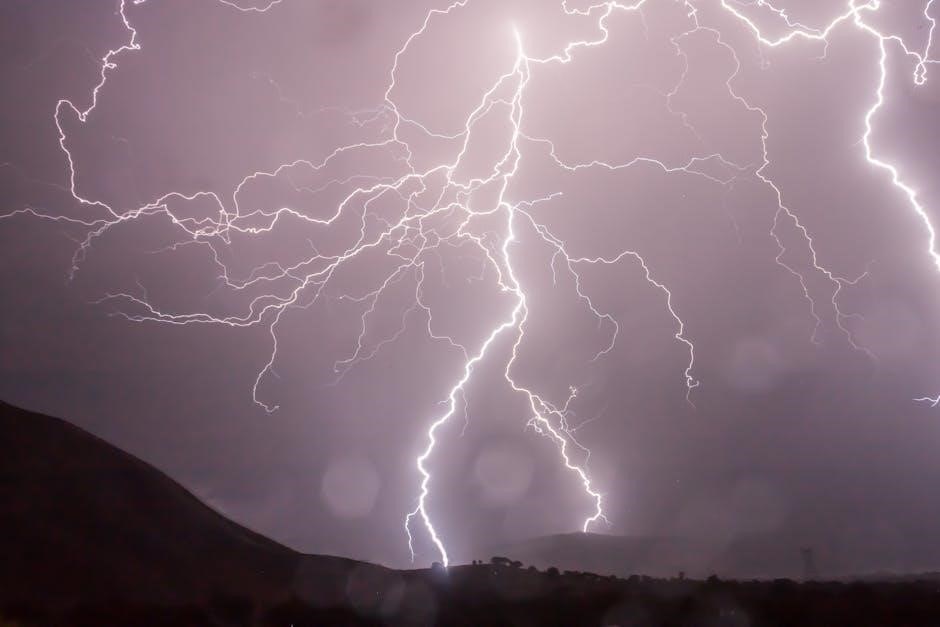
Educational and Analytical Value
God of Fury PDF serves as a valuable resource for studying narrative techniques, character development, and thematic exploration․ Its complex storytelling encourages critical thinking and literary analysis, making it suitable for academic study․
8․1 Use in Academic Settings
God of Fury PDF offers significant potential for academic exploration, particularly in literature and cultural studies․ Its themes of power, vengeance, and moral ambiguity provide rich material for critical analysis․ University courses focusing on narrative structure, character development, and thematic depth could incorporate this text to encourage students to explore complex ideas․ The PDF’s accessibility makes it an ideal resource for classroom discussions, enabling students to engage with its content digitally․ Additionally, its exploration of human nature and conflict aligns with interdisciplinary studies, making it a versatile tool for fostering analytical and critical thinking skills among students․
8․2 Analysis of Literary Devices
God of Fury PDF employs a range of literary devices to convey its themes and engage readers․ Metaphors and symbolism are used extensively to represent abstract concepts like divine wrath and human frailty․ The narrative structure, with its non-linear progression, enhances the suspense and moral complexity of the story․ Dialogue is crafted to reveal character motivations, while descriptive language creates vivid imagery․ Foreshadowing plays a crucial role in building tension, hinting at impending conflicts․ The author’s use of irony and dramatic twists adds depth to the plot, inviting readers to reflect on the consequences of unchecked power and vengeance․ These devices collectively contribute to the book’s emotional impact and intellectual appeal, making it a valuable subject for literary analysis․
8․3 Discussion Questions for Study Groups
How does the protagonist’s journey reflect the theme of divine wrath, and what lessons can be drawn from their experiences?
In what ways does the antagonist embody fury, and how does this impact the overall narrative?
What role do supporting characters play in highlighting the consequences of unchecked anger or vengeance?
How does the author use symbolism to explore the concept of divine retribution?
What cultural or historical references are present, and how do they enrich the story’s meaning?
How does the book challenge or reinforce your beliefs about justice and power?
What themes from God of Fury PDF are most relevant to contemporary societal issues?
Would you recommend this book to others, and why?
These questions encourage deeper analysis and personal reflection, making them ideal for study groups seeking to explore the book’s complexities․

Availability and Access
The God of Fury PDF can be accessed through various online platforms, including digital bookstores and libraries․ Ensure legal access by purchasing or borrowing from authorized sources․
9․1 Where to Find the PDF
To locate the God of Fury PDF, you can search on popular platforms like Google Books or Amazon Kindle, where eBooks are often available․ Using specific search queries with filetype:pdf can help narrow results․ Additionally, academic databases or online libraries may host the file․ Always ensure to access the PDF through legitimate sources to avoid piracy․ If unavailable publicly, consider purchasing from authorized retailers or requesting access through educational institutions․ Legal access ensures quality and supports the author’s work․ For the best experience, verify the source’s credibility before downloading․ This approach guarantees a safe and ethical way to obtain the PDF․
9․2 Formats and Editions Available
The God of Fury PDF is primarily available in digital formats, ensuring easy accessibility for readers․ The most common edition is the standard PDF version, optimized for e-readers and mobile devices․ Some platforms may offer EPUB or Kindle formats for compatibility with specific devices․ Additionally, hardcover or paperback editions might be available for those preferring physical copies․ It’s important to check the retailer’s specifications to confirm the format before purchasing․ Digital editions are frequently updated, so ensure you’re accessing the latest version for the best reading experience․ Availability may vary by region, so exploring multiple retailers or platforms is recommended to find the desired format․
9․3 Legal and Ethical Considerations for Access
Accessing the God of Fury PDF requires adherence to copyright laws and ethical guidelines․ Ensure that the source is authorized to distribute the content to avoid legal consequences․ Pirated copies may violate intellectual property rights and harm authors and publishers․ Always purchase or download from reputable platforms that respect copyright protections․ Ethically, supporting creators through legitimate channels promotes a sustainable literary ecosystem․ Be cautious of websites offering free downloads without proper licensing, as they may infringe on legal standards․ Prioritize legal access to uphold ethical principles and protect the rights of those involved in creating the work․
The God of Fury PDF offers a compelling exploration of themes, leaving readers with a lasting impression․ Its unique narrative and character development make it a memorable read․
10․1 Final Thoughts on the Book
God of Fury PDF is a captivating read that explores themes of power, vengeance, and divine retribution․ Its intense narrative and vivid characterizations leave a lasting impact, inviting readers to reflect on moral dilemmas and human nature․ While the book’s authorship and origins remain unclear, its emotional depth and thought-provoking storytelling make it a compelling choice for fans of dramatic fiction․ The PDF’s availability ensures accessibility, allowing readers worldwide to engage with its powerful themes․ Overall, God of Fury PDF is a memorable and impactful work that resonates long after the final page․
10․2 Impact and Legacy of “God of Fury PDF”
The God of Fury PDF has left a significant mark on readers, offering a fresh perspective on themes of power and vengeance․ Its engaging narrative has sparked discussions about moral complexity and human nature, resonating with audiences seeking thought-provoking fiction․ The PDF’s accessibility has contributed to its widespread reach, making it a notable work in contemporary literature․ While its legacy is still unfolding, the book’s ability to evoke strong emotions and introspection ensures its lasting impact․ Readers continue to appreciate its unique storytelling, solidifying its place as a memorable and influential read in the genre․
10․3 Recommendations for Further Reading
Readers who enjoyed God of Fury PDF may appreciate books that explore similar themes of power, vengeance, and moral complexity․ Works like The Count of Monte Cristo by Alexandre Dumas or The Kite Runner by Khaled Hosseini offer deep emotional journeys and redemption arcs․ For fans of fantasy, The First Law Trilogy by Joe Abercrombie provides gritty, morally ambiguous storytelling․ Additionally, The Power of Myth by Joseph Campbell could offer insights into the symbolic themes present in the PDF․ These works complement the narrative style and thematic depth of God of Fury PDF, ensuring a rich and immersive reading experience for enthusiasts of compelling storytelling․
